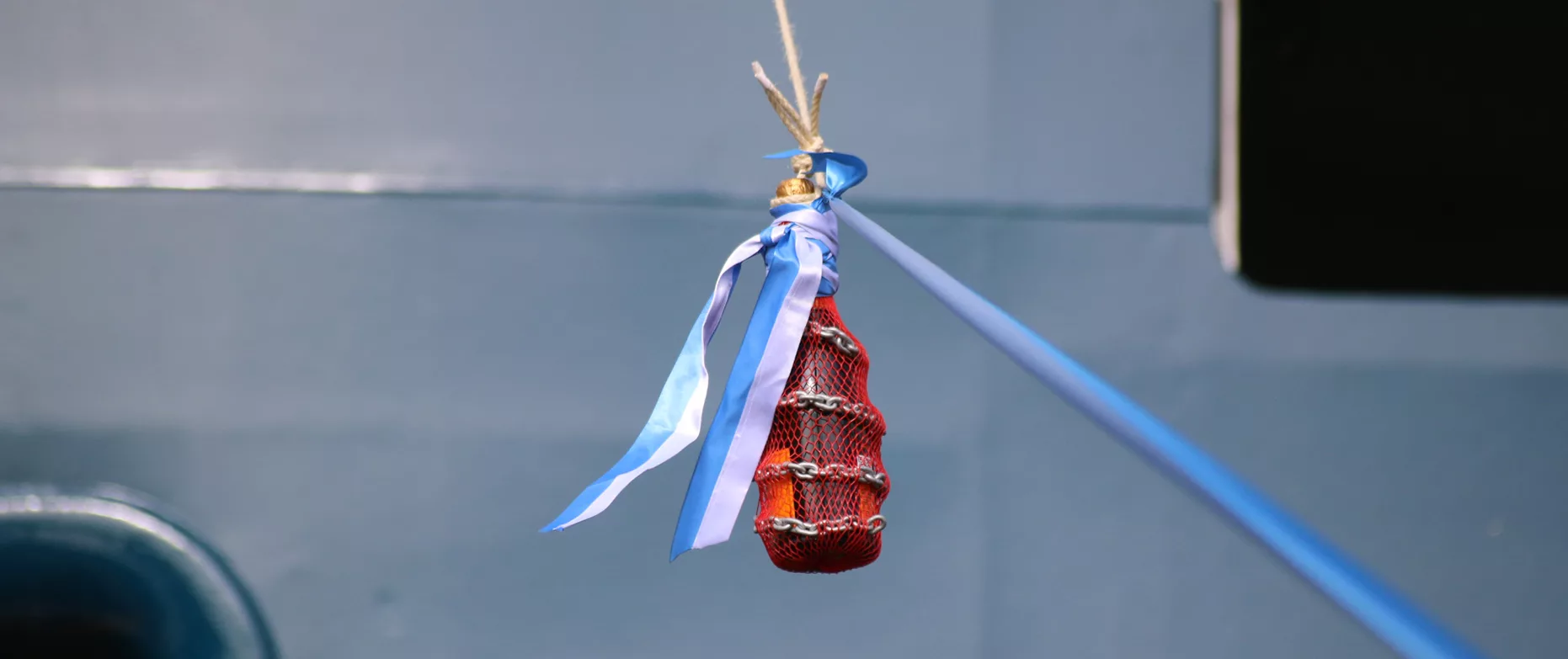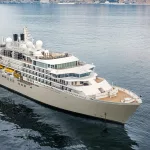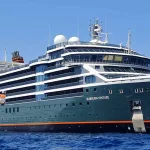There’s no doubt about it, the cruise industry is one of the most fascinating there is.
A brief timeline
Prior to the twentieth century, cruise ships were simply a mode of transportation.
It wasn’t until 1900 that Hamburg America Line launched the first purpose-built pleasure cruise ship. It was a very exclusive affair, offering only first-class cabins. Competitors P&O Cruises and Cunard Line soon followed suit, and cruise tourism became increasingly popular.
Then came the first and second World Wars, which saw many classic lines lose a large number of their ships. Fred. Olsen Cruise Lines took a big hit, losing 23 of its ships in WWI and 28 in WWII.
Thankfully, the 1950s saw what many people refer to as the Golden Age of cruising, with cruise ships becoming a social hub for the socially elite, filled with games, drinking and dancing. In 1950, Cunard held an all-American star cruise, with special guests including Judy Garland, Frank Sinatra, Elizabeth Taylor, Walt Disney and Rita Hayworth.
The cruise industry expanded rapidly over the next fifty years, with many modern cruise lines being founded; Princess Cruises in 1965, Norwegian Cruise Line in 1966, Royal Caribbean International in 1968, MSC Cruises in 1970, Celebrity Cruises in 1989 and Silversea Cruises in 1994.
Cruising was no longer exclusive to the rich but became all about leisure. Today, hundreds of cruise ships crisscross the world’s oceans every day.
Cruise traditions
With a century-old heritage comes a set of traditions that are still in play today.
Have you ever seen a bottle of champagne smash against a ship’s bow and wondered why that is? Or marvelled at some of the famous faces that have been named godparents of many now-famous ships?
From coin laying to referring to ships as “she”, we reveal some of the secrets behind the cruise industry’s most famous traditions in this week’s blog.
Bottle smashing

Bottle smashing is one of the cruise industry’s favourite pastimes.
As is tradition to “wet the baby’s head” with holy water, many cruise lines christen their new ships by splashing liquid onto the bow.
It all began with sailors sprinkling seawater to “bless” the ship before sending her out into the water.
In 15th-century England, it became customary to use wine. A representative of the King would drink from a goblet of wine, sprinkle what was left on the deck and then throw the goblet overboard.
By the 18th century, the Royal Navy had launched so many ships that throwing a goblet overboard each time had cost them a fortune, so they started throwing bottles of wine instead.
It wasn’t until the late 19th century that champagne came into prominence. The Royal Navy was the first to use champagne with the launch of HMS Royal Arthur in 1891.
Curator of Ship History at National Maritime Museum John Graves explains, “It was a very prestigious warship with a royal name, so champagne would have seemed fitting. It’s quite a clear progression – the move to champagne would have been all about celebration.”
However, the liquid wasn’t used in the traditional sense. At HMS Royal Arthur’s christening, hundreds of people watched in amazement as Queen Victoria smashed a bottle of champagne against the ship’s bow. Why exactly? No one seems to know. But other ship launchers quickly followed in the Queen’s footsteps – and a new tradition was born.
While champagne seems to be a fitting choice, there may be a better alternative. Graves admits, “I have been told by many ship builders that cheap Cava creates a more spectacular display – it’s much bubblier than champagne.”
But what happens if the champagne bottle doesn’t break? Well, that depends on how superstitious you are.
In December 2007, Camilla, Duchess of Cornwall christened Cunard’s Queen Victoria. The christening was spoiled only by the fact that the bottle didn’t break. During the ship’s maiden voyage, passengers came down with viral illness, an intense vomiting bug caused by what the British press dubbed “The Curse of Camilla”. Mere coincidence?
Coin laying

A shipbuilder placing a coin at the keel laying of SH Minerva.
During the keel-laying in the very early stages of construction, shipbuilders will place as little as one or as many as eight custom-minted coins under the ship’s base.
According to Greek legend, sailors believed that if they were to die at sea, they would need to pay Charon – the carrier of souls – to cross the river Styx to the afterlife.
In ancient Roman times, coins were placed under the keel to provide extra funds should the mast need replacing due to poor weather conditions.
The coins would usually be silver since sailors associated silver with the moon – the ruler of tides, a custom they believed would bring them good luck during their travels.
Today, there are two variations of the coin ceremony: the coins can be permanently welded to the keel or temporarily placed and retrieved once the ship is out of dry dock. In this instance, the coins may be placed in a showcase on the ship for all to see.
“She”
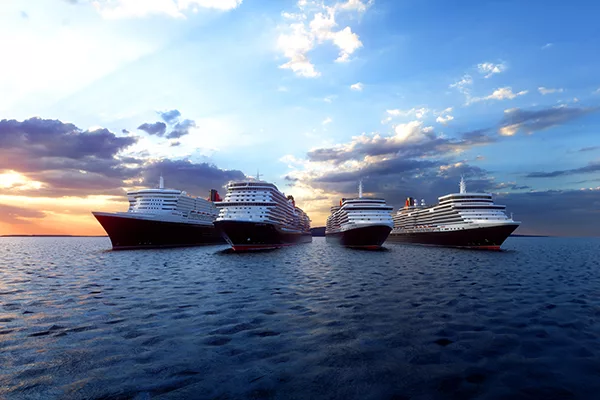
The four Cunard Queens: Queen Mary 2, Queen Victoria, Queen Elizabeth and Queen Anne.
Have you ever noticed that people tend to refer to ships as “she”? Not only that, ships are described as having “sisters” – ships that are built to the same or a similar design.
There are many reasons for this. The first and perhaps most obvious is that the gender of the Latin word for ship – Navis – is feminine. Other reasons range from ancient notions which regarded ships as a reflection of a world which saw women as a mystery – like Mother Nature – and the very definition of a vessel, which, like a mother’s womb, functions to contain and carry.
Additionally, between the 16th and 20th centuries, ships would sail with a figurehead on their bow, which resembled a beautiful woman – often a goddess – who would protect the ship and her crew.
When the relationship between the subject and the object is personal, it is common to refer to it as “he” or “she”. It was (and still is) common for sailors to name their ships after their wives, mothers and daughters, who they would not see for months, if not years, at a time.
Many ships are also named after famous female figures. Christopher Columbos’ ship – one of the most famous ships in history which sailed the Atlantic – was called Le Santa Maria, named after the Virgin Mary. Take Cunard as another example. The line’s four ships are named after the four queens: Queen Mary 2, Queen Victoria, Queen Elizabeth and Queen Anne.
When talking about a ship with a traditionally female name, it makes sense to refer to it as she. But not all ships are given a female identity. The German Navy has always referred to its ships as “he”, the most famous being the battleship Bismarck, built for Nazi Germany’s Kriegsmarine. Additionally, Chinese sailors tend to use gender-neutral terms like “it” when referring to their ships.
Godparents
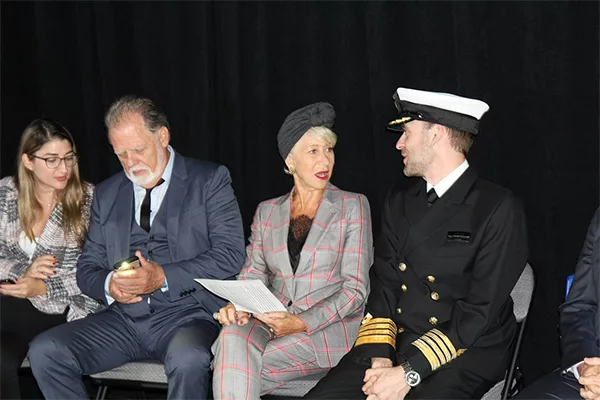
Helen Mirren talking to the Captain on Scenic Eclipse.
It’s a long-standing tradition that a cruise ship has a godparent. In ancient Roman times, sailors would call upon the gods to bless their ships and keep them safe. Today, many cruise lines appoint a godparent – usually a woman – to “sponsor” a new vessel.
Appointing a godparent is a great way to get publicity and build excitement for a new ship. Some top names include:
- Queen Elizabeth II as the godmother of Cunard’s Queen Elizabeth and P&O’s Britannia
- Catherine, Duchess of Cambridge as the godmother of Princess’ Royal Princess
- Helen Mirren as the godmother of Scenic Ocean Cruises’ ship Scenic Eclipse
- Julie Andrews as the godmother of Crystal Cruises’ ship Crystal Serenity
- Oprah Winfrey as the godmother of Holland America Line’s ship Nieuw Statendam
Some cartoon characters have also assumed the role of godmother. Dora the Explorer is the godmother of P&O’s Pacific Explorer, Shrek’s Fiona is godmother to Royal Caribbean International’s Allure of the Seas, and Tinkerbell is the fairy godmother of Disney Cruise Line’s Disney Wonder.
Aside from generating publicity, what does a godmother do? It is the godmother’s responsibility to attend the christening ceremony and officially name the ship. The godmother is also the one who will smash the champagne bottle against the ship’s bow.
Which cruise tradition is your favourite? Let us know in the comments below.

